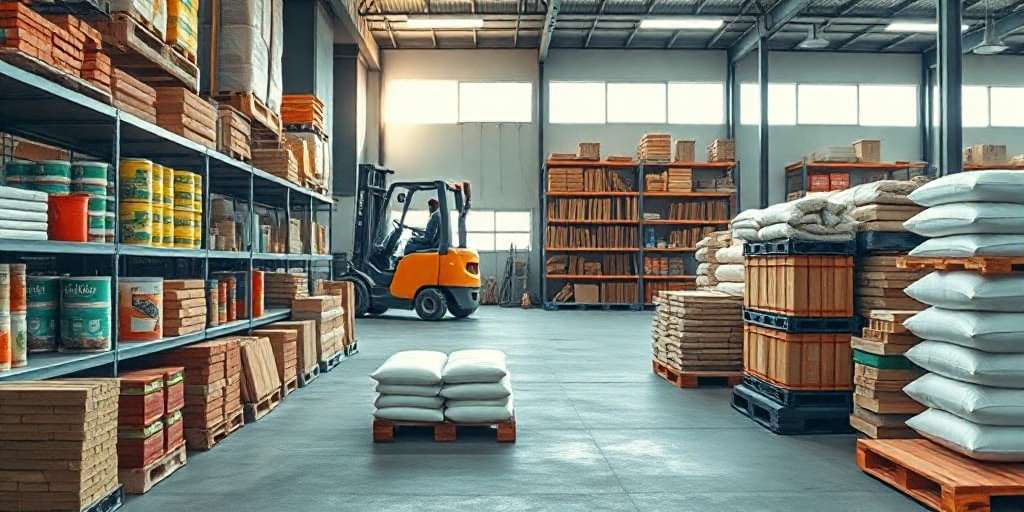History and Evolution of Construction Materials
The history of building materials is a fascinating narrative that reflects the evolution of human needs and the rise of technical knowledge. These materials have gone from being natural elements to being ingeniously manufactured products, adapting to the demands of each era.
The first natural materials
In the past, building materials were mainly natural. Our ancestors used resources available in their immediate environment, such as:
- Wood: Used for structures, roofs and furniture. Its abundance and ease of work made it a popular choice.
- Stone: A durable material that provided stability and resistance, ideal for permanent buildings.
- Mud: Used in the manufacture of primitive bricks, which were dried in the sun.
Evolution of manufactured materials
Over time, manufactured materials were developed that improved the qualities of constructions. Some of the most significant developments include:
- Fired clay bricks: Introduced in ancient civilization, they increased strength and durability compared to unfired bricks.
- Cement: It began to be used from antiquity and evolved with the introduction of Portland cement in the 19th century, revolutionizing construction techniques.
- Composite materials: Industrialization facilitated the creation of more sophisticated materials that combined properties of several components.
Technological innovations in construction
Technology has played a crucial role in the development of new materials. The most relevant innovations include:
- Special cements: Like phosphate cement and slag cement, which offer solutions to specific problems such as resistance to sea water.
- Ceramic and refractory bricks: Adapted to face extreme conditions and increase the energy efficiency of buildings.
- Innovative tiles: That provide functionality and aesthetics, suitable for different spaces and uses.
Cements: Essential Binders
Cements are fundamental components in modern construction. They act as binders, binding other materials together and providing structural stability to buildings. Their diversity and adaptability have made them an essential element in architectural projects of all kinds.
Types of Cements
There are several types of cement, each with its own characteristics and specific applications. The most common ones are detailed below.
Portland cement
Portland cement is the most commonly used type in the construction industry. It is manufactured by calcining lime and clay, and its versatility makes it ideal for the production of concrete and mortars.
Emery cement
Emery cement is characterized by a high resistance to water and chemicals. It is very useful in structures that have to withstand aggressive environments, such as in industrial installations or maritime works.
Phosphate cement
Produced from the reaction of phosphate with chlorides, this cement is ideal for structures that will be exposed to seawater. Its composition makes it particularly resistant to corrosion.
Slag cement
Slag cement is made from metal slag, which makes it suitable for sustainable construction. It is designed to improve the mechanical properties of concrete, as well as to reduce the environmental impact.
Characteristics of Cement
The properties of cement are key to its application and operation within structures. These features include:
resistance
Cement must have a high resistance to compression, important to withstand significant loads in buildings and infrastructures.
durability
The ability of cement to maintain its properties over time is essential. Good quality cements are very durable, resisting adverse weather conditions.
Heating temperature
Certain types of cement can tolerate extreme heat conditions, making them suitable for construction in areas with high temperatures or in specific applications such as fireplaces and furnaces.
Applications of Cement
Cement has a wide range of applications in construction:
Concrete production
Cement is a key ingredient in the manufacture of concrete, a mixture that, together with water and aggregates, provides a robust and versatile material for foundations, structures and pavements.
Mortars for bricks and tiles
Mortars made with cement are indispensable for joining bricks and tiles. They help provide stability to walls and surfaces, preventing cracks and water seepage.
Bricks: Resistance and Durability
Bricks are essential building materials that offer great strength and long durability. Its use has been maintained over the years thanks to its exceptional characteristics and versatility in architectural applications.
Types of Bricks
Mud bricks
Clay bricks are the most traditional, made from natural clay. They are usually sun-dried or baked, which gives them a strong structure, ideal for basic building projects.
Ceramic Bricks
Made from clay fired at high temperatures, ceramic bricks have greater strength and are suitable for more demanding applications. They are widely used in both interior and exterior constructions.
Refractory bricks
These bricks are specially designed to withstand high temperatures. They are commonly used in furnaces, chimneys and other structures that need heat resistance.
Face Bricks
The exposed bricks are characterized by their well-kept aesthetics, as they present attractive visual finishes. They are widely used in facades and decorative walls, providing added value to architecture.
Characteristics of the Bricks
durability
The durability of bricks is one of their most notable qualities. They are very resistant to different climatic factors, such as rain, cold and heat, which makes them an ideal option for durable structures.
Thermal and Acoustic Insulation
Bricks provide excellent thermal and acoustic insulation. This helps to maintain interior temperatures and reduce noise transmission, thus improving the comfort of the spaces.
Aesthetics
Available in a wide variety of colors and finishes, bricks allow for multiple architectural designs. Their aesthetic versatility makes them a popular choice in both modern and classic projects.
Applications of the Bricks
Construction of walls and fences
These materials are used to erect walls and walls that offer structural stability and insulation. Bricks are common in the construction of houses, commercial buildings and other infrastructure.
fundamentals
Bricks are used together with cement to create a solid foundation that supports the building’s structure, ensuring its long-term safety and stability.
Decorative elements
In addition to their structural function, bricks can be used as decorative elements in facades and interiors, bringing a distinctive style and warmth to the space.
Tiles: Functionality and Aesthetics
Tiles are versatile materials that combine functionality and aesthetics in interior and exterior spaces. Their wide variety of designs and features make them ideal for multiple applications.
Types of Tiles
Ceramic tiles
Ceramic tiles are made from clay and undergo a high temperature firing process. They are available in a wide range of colors and finishes, making them very popular for bathrooms and kitchens.
Sandstone
Stoneware is a more resistant and durable type of tile. Its properties make it ideal for high traffic areas where wear resistance is essential.
Glass tiles
Glass tiles are known for their transparency and decorative ability. They are water resistant and very easy to clean, making them a popular choice for surfaces that require frequent cleaning.
Porcelain stoneware
Porcelain stoneware stands out for its low water absorption and high wear resistance. In addition, it offers a wide variety of designs that imitate other materials, such as wood or stone.
Characteristics of the Tiles
Moisture resistance
Tiles, especially ceramic and stoneware, have excellent resistance to moisture, which makes them suitable for spaces such as bathrooms, kitchens and outdoor areas.
Ease of Cleaning
The smooth surface of the tiles allows for quick and easy cleaning. This aspect is fundamental in environments where constant cleaning is necessary.
Aesthetic Variability
Tiles are available in a wide range of designs, colors and textures. This variability makes it possible to create personalized environments in tune with the taste of each owner.
Applications of the Tiles
Wall coverings
Tiles are widely used as wall coverings in kitchens and bathrooms, as they provide additional protection against moisture and facilitate cleaning.
Pavements
The tiles can be used as flooring in a variety of spaces, including corridors and living rooms. Their durability and aesthetics make them an attractive and functional solution.












